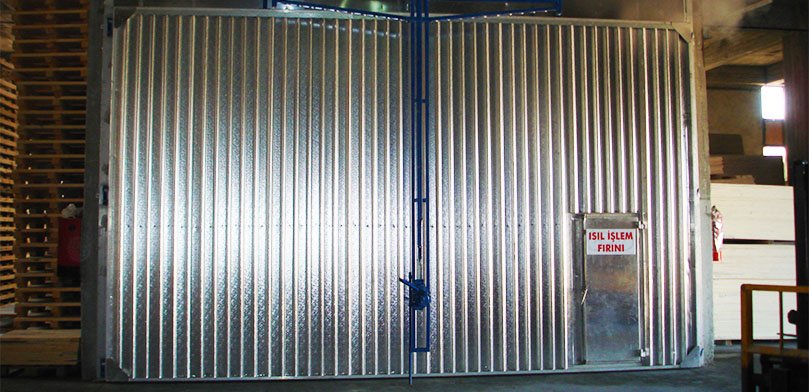Heat Treatment Process and ISPM-15 Standard

Heat treatment is a heat treatment process applied to change the properties of metals and some materials. This process can be used to increase or decrease the hardness, strength, flexibility, formability and other physical properties of materials. Heat treatment usually consists of three different stages: heating, holding and cooling. First, the materials are heated at high temperatures in a special furnace. This process changes the crystal structure of the materials and allows them to harden to a certain level. Next, the materials are soaked and kept at a constant temperature for a certain period of time. This holding time is an important factor that determines the properties of the material. Finally, the materials are slowly cooled and take on their new properties.
As Kersan, we apply heat treatment in wooden packaging production to increase the life of the packages, increase their durability and control the humidity. The heat treatment ensures that the moisture and insects in the wooden packaging materials are destroyed and thus prevents the packaging from rotting. It also increases the rigidity, resistance and durability of the packages and thus ensures safe transportation of products. Heat treatment requires wood packaging materials to be treated in a controlled environment in terms of temperature, time and humidity level. Packaging materials are heated at high temperatures in a special furnace and kept at this temperature for a certain period of time. This process kills the moisture and microorganisms of wooden packaging materials and thus increases the useful life of the packaging.
Heat treatment is widely used in the production of wooden packaging and is required by international packaging standards. This procedure is also necessary to align wooden packaging with ISPM-15 standards, which makes it suitable for use during international transport. For this reason, wood packaging manufacturers should have equipment suitable for heat treatment and accurately control parameters such as temperature, time and humidity required by heat treatment. Heat treatment is an important procedure in the production of wooden packaging and is an effective method to improve the quality and durability of packaging. Wood packaging manufacturers must correctly implement the heat treatment procedure and guarantee the quality of packaging materials to meet the demands of their customers.
ISPM 15 marking; It is an international regulation and is required by the countries where the product is exported. Traceability marking; It is an internal regulation and is used in our country to track the wooden packaging materials that are heat treated and marked with ISPM 15. It is the standard that regulates the use of wooden packaging materials in international trade, adopted by the IPPC (International Plant Protection Convention) General Assembly in 2002, of which our country is also a member. Regardless of the product exported according to ISPM 15 standard, all kinds of wooden packaging materials (pallets, crates, crates, wedges, etc., excluding those with a thickness of less than 6 mm) are treated (heat treated or methyl bromide fumigation) and marked. it has to be. Marking with heat treatment or methyl bromide fumigation can only be done by authorized companies.
In the heat treatment furnaces of wood material, 30 minutes after the core temperature of the wood reaches 56 degrees by baking. It is the process of keeping the wood free from harmful insects and larvae. After this process is done, the IPPC stamp is stamped on the pallet. Thus, the transmission of the disease with wood in international transportation is prevented.
The implementation of the standard is the responsibility of the member states, and it brings additional responsibilities to companies that import or export through legislative changes. The responsibility of the exporting country is to publish and implement the legislation that authorizes heat treatment or methyl bromide fumigation and the internationally valid marking for this process; The responsibility of the exporter is to ensure that the wooden packaging material used in the exported products bears the ISPM 15 standard; The responsibility of the importer is to request that the wooden packaging material used in the imported products bear the ISPM 15 standard; The responsibility of the importing country is to look for the ISPM 15 standard mark on wooden packaging materials entering its country. However, in practice, the entire burden is on the exporter.